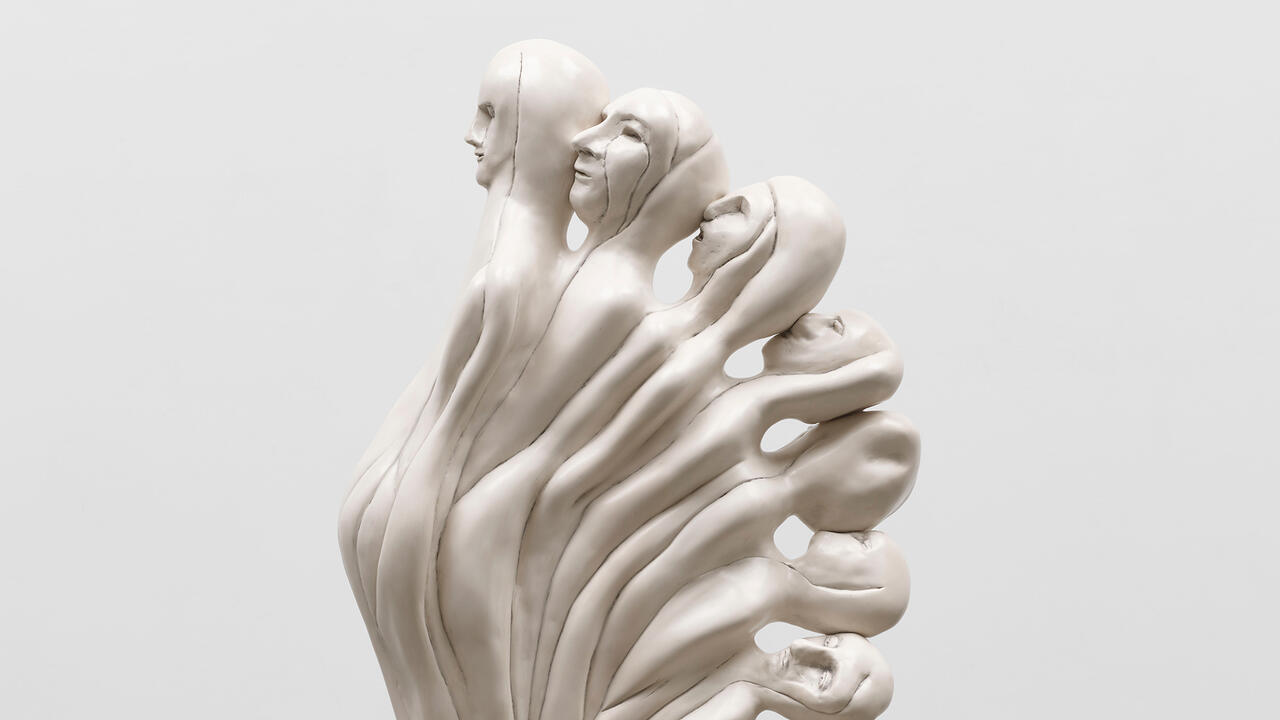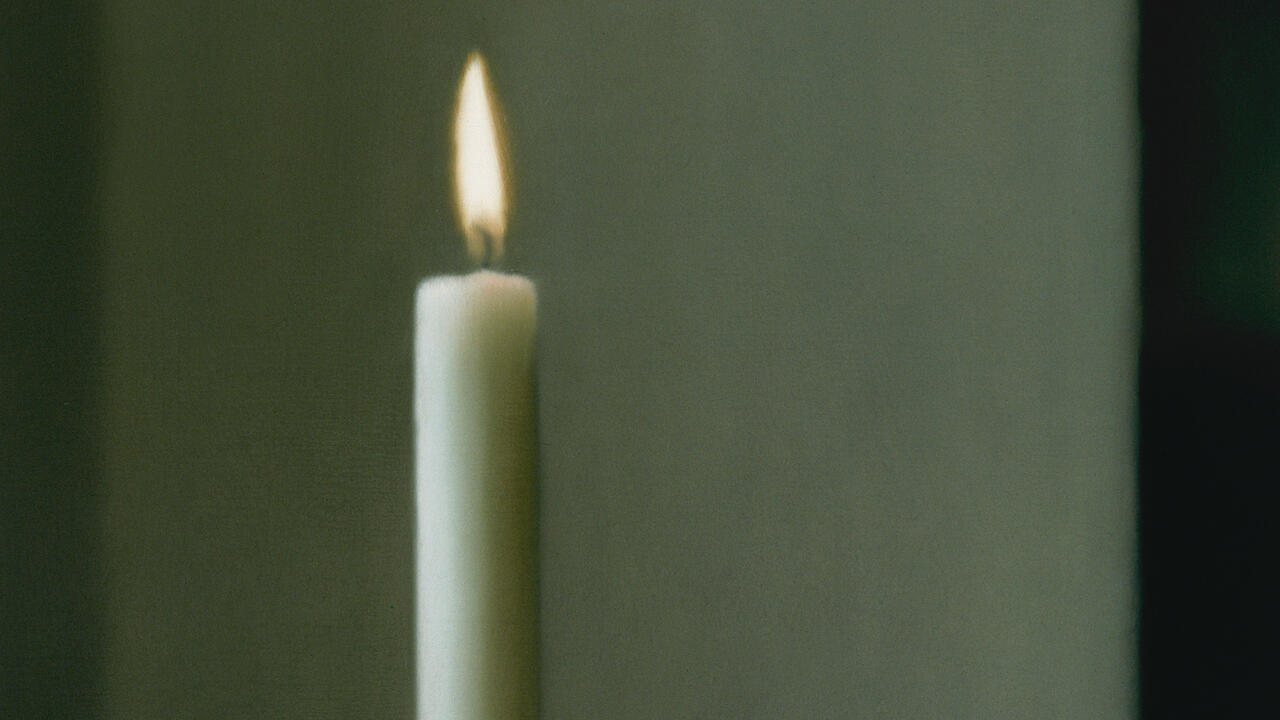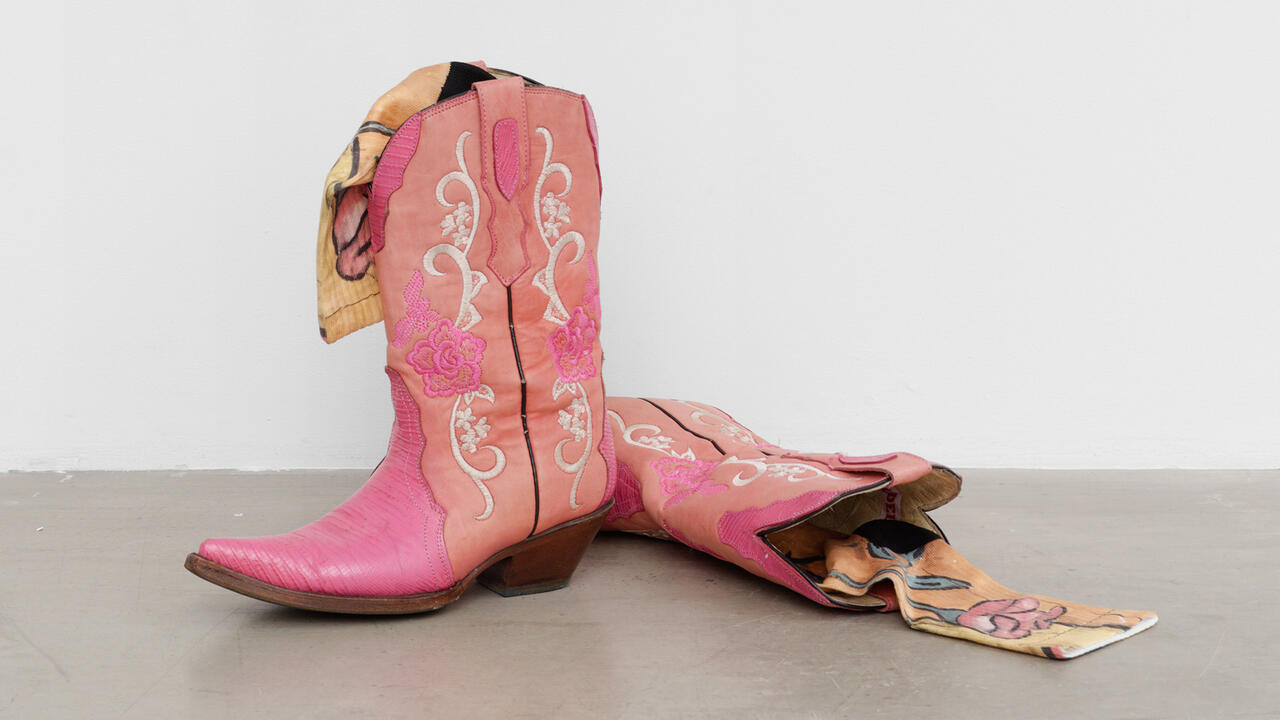Serpentine Dancer
The life and legacy of the wildly inventive choreographer and performer Loie Fuller
The life and legacy of the wildly inventive choreographer and performer Loie Fuller

In the autumn of 1892, Mary Louise Fuller left New York, where she enjoyed modest success in vaudeville, and travelled to Paris intent on reinvention as a dancer. Loie, as she’d lately begun to style herself, had secured an interview with Édouard Marchand, director of the Folies Bergère: she planned to perform for him a ‘Serpentine Dance’ she’d devised the year before. But stepping from her carriage on rue Richer she was startled by a poster advertising the theatre’s current attraction: a young woman wreathed in silk and billed as the ‘Serpentine Dancer’. Her name was Maybelle Stewart, and it seems she was only too well acquainted with Fuller’s recent appearances in New York. ‘Here was the cataclysm, my utter annihilation,’ Fuller wrote later. Trembling, she went in to watch the usurper’s matinée performance. ‘The longer she danced, the calmer I became.’ Stewart, it turned out, was terrible. ‘I could have kissed her for her inefficiency.’ When the theatre emptied, Fuller put on her own curious billowy costume and auditioned for Marchand. By the end of the day, the hapless Stewart had been dismissed.

Fuller went on to dance 300 consecutive nights at the Folies Bergère. Parisian intellectuals were in the midst of a craze for the music hall, and she recalled in her memoir Quinze ans de ma vie (1908, published in English as Fifteen Years of a Dancer’s Life, 1913), that writers and artists threatened to crowd out regular punters. What exactly had they come to see? The act Fuller had contrived in New York involved seeming acres of white silk, her gown extending into vast wings that the dancer manipulated with concealed wands made of aluminium or bamboo. (We know this kind of detail because Fuller secured several patents for her costumes and stage machinery — with the serpentine dress, according to the text of US Patent no. 518,347, ‘beautiful scenic effects are produced’.) The ‘Serpentine Dance’, by which she made the fabric swirl around her almost stationary figure, was just one of a dozen variants on the principle of a body consumed by movement. Also by light and colour: while at the Folies Bergère, Fuller perfected her ‘Fire Dance’ with the aid of a glass trap in the stage and a red lamp trained upwards on her seething form.
You can get some sense of the sheer strangeness of these performances — less, however, of the immersive atmosphere she conjured around them — by looking at several films made by the likes of Léon Gaumont, Auguste and Louis Lumière, and Georges Méliès. It’s not clear whether Lo Lo (as the French knew her) actually appears in any of these; the dancers seem to be imitators, or perhaps members of Fuller’s growing troupe. The scenes into which they’re inserted are occasionally absurd: the ‘Serpentine Dancer’ rises from the earth like an apparition, or is clumsily match-cut into existence from a fluttering bat clearly made of paper. But, suddenly, there is the dance itself: a succession of surging forms, equivocating violently between figuration and abstraction. Facing the camera and rippling the costume just a touch, she draws a snaking line with the vast cuffs of her dress. Seen in profile, she seems to swim in a rolling silken ocean. Now, huge discs of fabric spin either side of her like industrial saw blades. At her most extreme, she disappears inside a cylindrical tower of cloth, like some larval thing immured in its cocoon.
How had she become this prodigious creature, this explosion of protean matter on a Paris stage? Fuller was born in Illinois in 1862. A lifelong hypochondriac, she claimed to have caught a cold at the moment of her birth that she never shook off. Little Louie, as she was then, gave her first performance at Sunday School, and later delivered temperance lectures complete with lurid coloured slides depicting ruined livers. In her teens she began to act, found a part in Buffalo Bill’s Wild West Show, then moved to New York. Fuller was a canny fantasist who told overlapping tales regarding the origins of her singular dancing style. Among these is an anecdote that has her costumed in a skirt far too large, and hoisting it up as she drifted about the stage while playing a character who’d been hypnotized. The sight, she claimed, had a mesmeric effect on a New York audience, who cried: ‘It’s a butterfly! … It’s an orchid!’

Interviewed by Éclair magazine in 1914, Fuller recalled: ‘I wanted to create a new form of art, an art completely irrelevant to the usual theories.’ At a time when advanced types of dance pushed the body itself into abstraction (‘forcing it’, as the critic Frank Kermode wrote in his 1961 essay ‘Poet and Dancer Before Diaghilev’, to ‘objectify a pattern of sentience’) she became famous, at least on the face of it, for incarnating other sorts of being — including inanimate, almost immaterial things. The serpent and butterfly were just the start; she might equally imitate a peacock, a lily, a cloud, or some pale bird of the polar seas. With their awkward atactic movements, Modern dancers were sometimes compared to the thrashing and flexing hysterics famously studied and photographed by Jean-Martin Charcot in the late 19th century. But Fuller looks more like one of those animals whose movements were photographed and analyzed by Étienne-Jules Marey around the same time: a bird multiplied in flight, a wasp with gilded wing tips, a ray propelling itself by elegant, sinister undulation.
There is no evidence that Fuller was aware of the chronophotography of Marey, or of Eadweard Muybridge. Her technical interests were considerable, but they were directed at effects and not essences. Her extraordinary fame at the turn of the century — there were Fuller-themed soaps, perfumes, skirts and ties, even cocktails à la Loïe — was built as much on her innovations in stage lighting as in choreography and costumes. From the outset, the ‘Serpentine Dancer’ had been bathed in coloured light: Fuller experimented constantly to find the right technology, from Thomas Edison’s electric lamps to potentially lethal phosphorus. (A phosphorescent dress once exploded at her Latin Quarter laboratory, singeing the eyebrows off Fuller and her dancers.) Her most compelling scientific interest arose from a friendship with Marie Curie, from whom she tried to borrow a quantity of radium to light her stage. Curie assured her it was impossible, and crazy, so Fuller compromised with a dance in homage to the mysterious element, and in 1911 delivered a lecture on radium in London, hymning its magical potential to ‘photograph our imagination’.
Fuller herself was a kind of special effect. She aspired to the inhumanity of radiant matter, to a mutation supervised by machines. Her act, Stéphane Mallarmé wrote, was ‘an intoxication of art and, at the same time, an industrial accomplishment’. The more skilled she became at designing costumes that were hardly costumes — closer to atmospheres, or ectoplasmic effusions — and the more complex or spectacular the lighting thrown upon those costumes, the less there seemed to be of Fuller. Her disappearance into the dance is all the more impressive because, physically, she was far from the narrow, angular ideal already current by the 1890s. At the Moulin Rouge, the morbidly graceful Jane Avril, who had in fact been one of Charcot’s patients, embodied this slim, neurasthenic modern type — one critic wrote that Avril’s movement was a kind of handwriting in space. Fuller tended, instead, to the spherical: she was a solid point amid the freehand lines and volumes sketched by her gowns. But her art lay partly in erasing this cumbersome body. As Mallarmé put it in his essay from 1893, ‘Considerations on the Art of Ballet and Loie Fuller’, she could turn herself into ‘a central nothingness, all volition, for everything obeys a fleeting impulse to disappear in whirls’. The French poet’s essay, written after seeing Fuller at the Folies Bergère and published in The National Observer, is the best known literary response. But Mallarmé was hardly alone, for the dancer seems to have seized the imaginations of writers and critics, and if she did not exactly define the aesthetics of Symbolism in that decade, she was surely a test case for how far the new ideas regarding poetic embodiment and abstraction could be pushed in the realm of actual bodies. Critics may at first have been impressed by Fuller’s supposed mimetic abilities, but they quickly saw past the serpent and butterfly to the fundamentals of movement. ‘Detail is secondary,’ wrote the art critic Roger Marx. The Belgian Symbolist Georges Rodenbach spoke of a ‘body delighted by being unlocatable’. She turns up much later in W.B. Yeats: he seems to refer to her ‘Fire Dance’ in his poem ‘Sailing to Byzantium’ (1928) — ‘Dying into a dance … An agony of flame’ — and mistakes the Japanese dancers in her troupe for Chinese in his ‘Nineteen Hundred and Nineteen’ (1921). Kermode argues convincingly that Fuller had pointed many Anglophone writers, as well as French, towards a newly impersonal art: ‘She is abstract, clear of the human mess, dead and yet perfect being … out of time.’

Though she was the subject of many paintings and sculptures, and became a common figure for Art Nouveau ornament, Fuller appears to have presented more of a problem to artists than she did to writers thrilled by her vanishing act. Depictions tend to oscillate between allowing her a body and taking it all away, but stopping just shy of abstraction. In posters by Jules Chéret and Jean de Paléologue that advertise her appearances at the Folies Bergère, the artists have predictably given her a trim naked outline, teasingly visible among the eddies of colour and light. This version of Fuller is very far from the filmed or photographed reality. In a series of photographs taken by one Samuel Joshua Beckett around 1900, her body is certainly present but swamped by a swelling prosthetic blank, then entirely obscured. Henri de Toulouse-Lautrec had caught this moment of immersion very well in a lithograph from 1893. With her head flung back and a pair of tiny feet hovering centimetres above the earth, the dancer gives herself up to the bizarre shape — a fungus, a phantom, a monstrous stain or slick — that she has summoned on stage. In a painting by Koloman Moser of 1902, she is no more than a tiny blob atop a spreading form like the frill of a mushroom, flanked by vertical streams of red and blue light.
Despite all these renderings of her, Fuller’s visual legacy is hard to reconstruct. As a dancer, her reputation was quickly eclipsed by those of Isadora Duncan and Vaslav Nijinsky. Cinema, which has partly preserved her for us, also did a better job than she could of staging the spectacle of pure movement. Her innovations in stage lighting were important, but were further developed without her name attached. Still, it’s impossible to watch those films of her — with their sudden metamorphoses, their frothing and roiling fabrics, their hand-tinted blushes — and not imagine a submerged sort of Fullerism at work over the past century. It survives every time cinema, for example, allows itself to be seduced by matter in motion: in the several astonishing seconds it takes Oberon’s starry cape to appear onscreen in Max Reinhardt’s A Midsummer Night’s Dream (1935); or in the gleaming, extruded swathes of colour in Alain Resnais’s film about plastics manufacture, Le Chant du Styrène (The Song of Styrene, 1958). Her costumes, predictably, have been among the Modernist motifs invoked by Lady Gaga; but it is Fuller’s vanishing into atmosphere and effect that now seems most contemporary — she might be a precursor to all artists in thrall to projected light and colour.

Fuller died in 1928, having performed for the last time the year before, in London. Late in life, she was surrounded by her dance troupe, known as the Fullerets, and looked after by her partner, the heiress Gaby Bloch. Duncan recalled visiting Fuller in Berlin and finding the inveterate hypochondriac fretted over by many beautiful young women. In 1924, the Louvre put on an exhibition about her. It seems the performances she devised became more stark and austere in her last decade. The Fullerets mimicked a silver sea to the strains of Claude Debussy’s La Mer (1905). There was a dance that consisted of no more than a row of silver tassels held by Fuller’s girls and lit by a single horizontal shaft; she had a photograph of the surface of the moon blown up and projected onto her costume, becoming a pure white screen. Fuller succumbed to pneumonia aged 65, but the rumour in Paris was that she burned to death, and that her last words had been: ‘The light! The light!’
Main image: Koloman Moser, Loie Fuller Dancing ‘The Arch Angel’, 1902, ink and watercolour on squared paper, 18 × 23 cm. Courtesy: Albertina Museum, Vienna






















